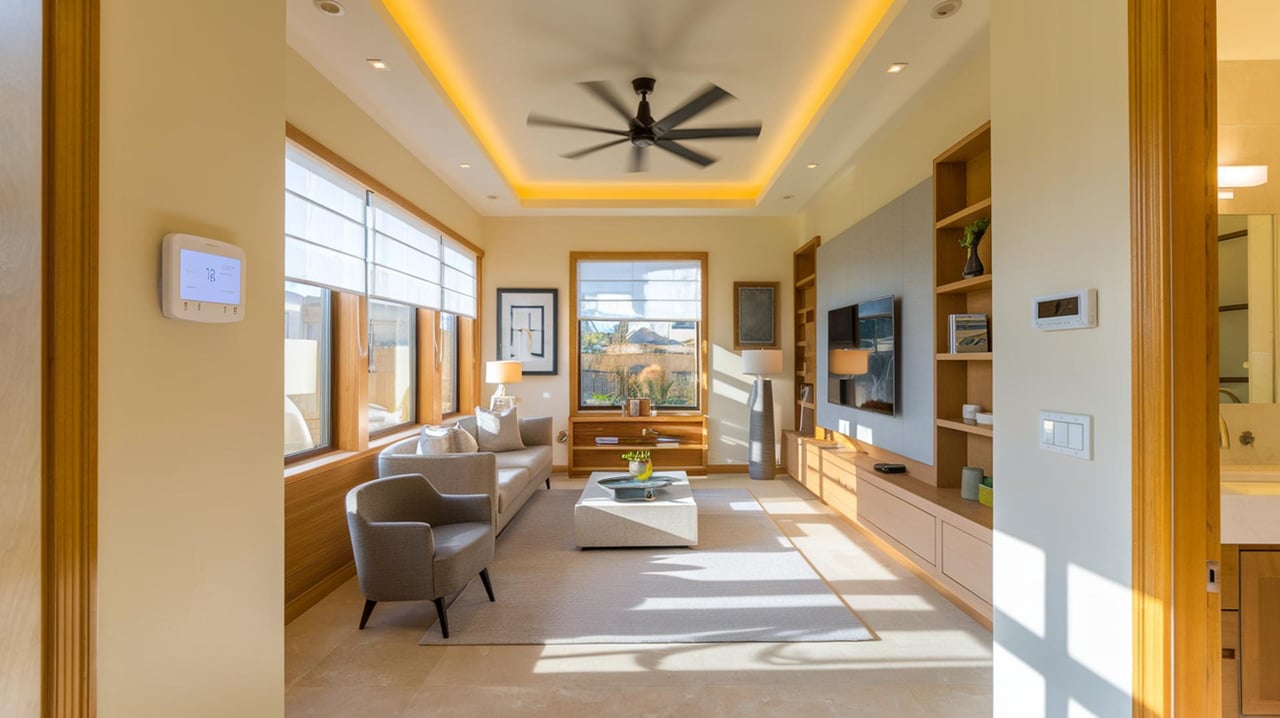
Boost Efficiency: Low-Cost Upgrades for Your Home
Lifestyle June 12, 2025

Lifestyle June 12, 2025
Improving the efficiency of your home doesn't have to be an expensive endeavor. With a few strategic upgrades, homeowners can enhance comfort, reduce energy consumption, and even increase property value. These low-cost improvements are not only budget-friendly but also make a significant impact on the overall functionality of your living space. Whether you're looking to lower utility bills or create a more sustainable environment, these upgrades offer practical solutions that can be easily implemented.
Switching to LED lighting is one of the simplest and most effective ways to boost home efficiency. LED bulbs use significantly less energy than traditional incandescent bulbs and have a much longer lifespan. This means fewer replacements and lower electricity bills over time. LED lights also produce less heat, which can help maintain a cooler indoor environment, reducing the need for air conditioning. Available in various color temperatures and styles, LED bulbs can fit any lighting fixture, making the transition seamless and straightforward.
A programmable thermostat is a smart investment for any homeowner looking to optimize their heating and cooling systems. These devices allow you to set specific temperatures for different times of the day, ensuring that energy is not wasted when the home is unoccupied. By adjusting the temperature settings to match your daily routine, you can significantly reduce energy consumption and lower utility costs. Many modern thermostats also offer remote control via smartphone apps, providing convenience and further enhancing efficiency.
Drafty windows and doors can lead to significant energy loss, making it harder to maintain a comfortable indoor temperature. Sealing these gaps with weatherstripping or caulk is a cost-effective way to improve your home's insulation. By preventing air leaks, you can reduce the workload on your heating and cooling systems, leading to lower energy bills. This simple upgrade not only enhances comfort but also contributes to a more sustainable living environment.
Proper insulation is crucial for maintaining a consistent indoor temperature and reducing energy consumption. Adding insulation to attics and basements is a relatively low-cost upgrade that can have a substantial impact on your home's efficiency. Insulation helps to keep warm air in during the winter and cool air in during the summer, reducing the need for constant heating or cooling. This upgrade is especially beneficial in older homes that may not have adequate insulation in these areas.
Water conservation is an important aspect of home efficiency, and installing low-flow fixtures is an easy way to reduce water usage. Low-flow showerheads, faucets, and toilets use less water without compromising performance, leading to lower water bills and a reduced environmental footprint. These fixtures are widely available and can be installed with minimal effort, making them an accessible upgrade for any homeowner.
Many electronic devices continue to draw power even when they're turned off, leading to unnecessary energy consumption. Smart power strips can help eliminate this "phantom" energy use by automatically cutting power to devices that are not in use. By using smart power strips, homeowners can reduce energy waste and lower electricity bills. These devices are particularly useful for home offices or entertainment centers where multiple electronics are plugged in.
While replacing appliances may require a larger initial investment, upgrading to energy-efficient models can lead to significant savings over time. Energy-efficient appliances use less electricity and water, reducing utility bills and environmental impact. Look for appliances with the ENERGY STAR label, which indicates that they meet strict efficiency guidelines. This upgrade not only enhances home efficiency but can also increase property value by appealing to eco-conscious buyers.
Ceiling fans are a cost-effective way to improve air circulation and maintain a comfortable indoor temperature. In the summer, ceiling fans can help cool a room by creating a breeze, allowing you to raise the thermostat setting without sacrificing comfort. In the winter, reversing the fan's direction can help distribute warm air more evenly throughout the room. This simple upgrade can reduce reliance on heating and cooling systems, leading to lower energy bills.
Window treatments such as blinds, shades, or curtains can play a significant role in regulating indoor temperatures. During the summer, closing blinds or shades can block out heat from the sun, reducing the need for air conditioning. In the winter, heavy curtains can provide an extra layer of insulation, keeping warm air inside. By strategically using window treatments, homeowners can enhance comfort and reduce energy consumption.
Conducting a home energy audit is an excellent way to identify areas where efficiency can be improved. While professional audits are available, homeowners can also perform a basic audit themselves by checking for drafts, inspecting insulation, and evaluating the efficiency of appliances and lighting. By pinpointing specific areas for improvement, homeowners can prioritize upgrades and make informed decisions about where to invest in efficiency enhancements. This proactive approach ensures that resources are used effectively, leading to a more efficient and comfortable home.
Incorporating low-cost upgrades into your home can significantly boost its efficiency and save you money in the long run. Simple changes like improving insulation or upgrading to energy-efficient appliances can make a big difference. Start small and watch as your home becomes more comfortable and cost-effective. For more personalized advice and ideas, reach out to Jennifer Delonge to transform your living space efficiently.
Partner with Jennifer DeLonge for a creative, insightful, and deeply personal real estate experience. She'll expertly guide you every step, delivering exceptional results. Contact Jennifer today to begin your journey.